Neil Gaiman is much more than just a comics writer. This Brit is also a novelist, radio playwright, and screenwriter. With the announcement that Netflix is currently working on a series based on his groundbreaking comic The Sandman, Gaiman is on everyone’s radar yet again. Gaiman’s dark style translates well in cinematic storytelling, proven by films like Coraline and series like American Gods.
The Sandman follows the trials and tribulations of Dream, an anthropomorphic manifestation of his namesake metaphysical state. As it goes with all of Gaiman’s best comics, the mystical combines with the corporeal, leaving readers entranced by the stunning worlds Gaiman elicits with his words.
How To Talk To Girls At Parties (2016)
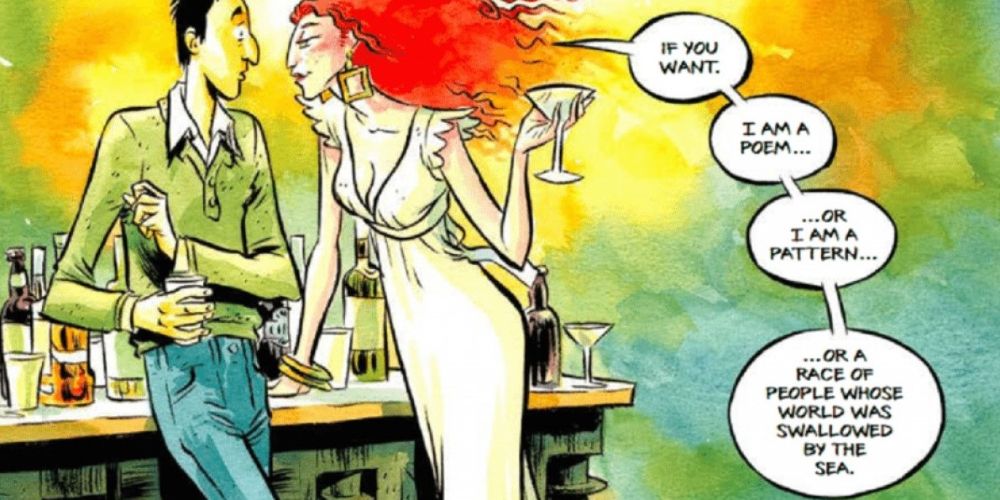
Dark Horse’s 2016 Gaiman graphic novel How to Talk to Girls at Parties originates with a short story Gaiman wrote in 2006. Set in 1970s Britain, it centers around two teenaged boys, Enn and Vic, who go to a party together in hopes of meeting girls, only to have their expectations totally challenged.
Gaiman worked with artists Fábio Moon and Gabriel Bá to adapt his prose piece into a long comic. In 2017, a film adaptation starring Elle Fanning, Alex Sharp, and Nicole Kidman was met with mixed reviews.
Signal To Noise (1993)
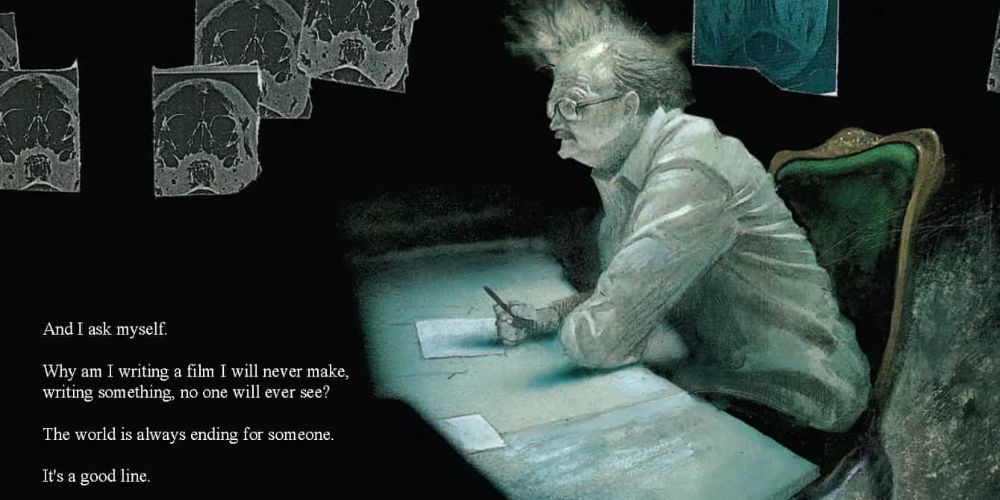
Originally serialized in the magazine The Face, Signal to Noise is one of Gaiman’s many collaborations with groundbreaking comics artist Dave McKean. This singular work, later published in full by Dark Horse, is a testament to the creative process.
In Signal to Noise, a London-based filmmaker with a terminal illness laboriously plots one final film he knows he will never be able to make before he dies. Fueled by apocalyptic visions, readers follow along as the narrator imagines a film wherein European villagers prepare for Armageddon on New Year’s Eve 999 A.D.
Black Orchid (1988 – 1989)
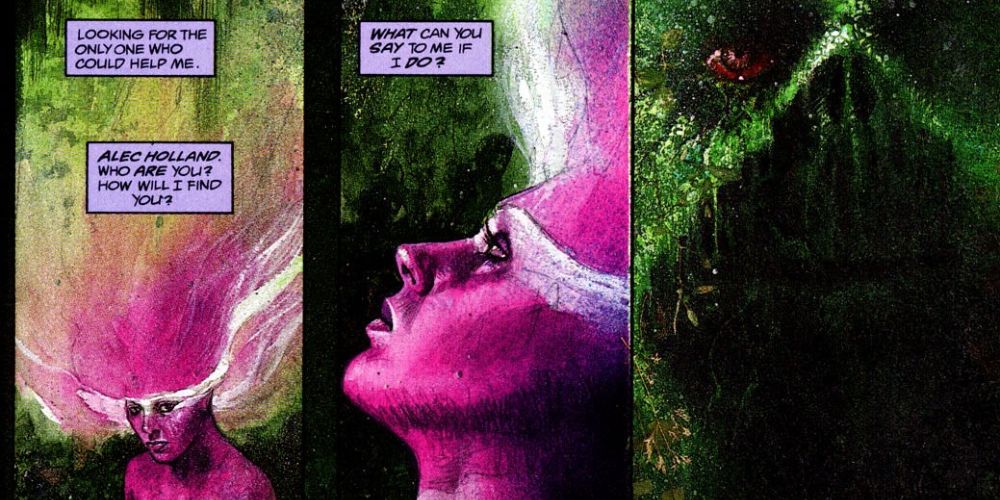
Another joint effort between Gaiman and Dave McKean, Black Orchid is a DC comic that ran for three issues. The superhero Black Orchid first appeared in 1973 as a sidekick for The Phantom Stranger, a woman whose main ability is mastery of disguise.
Gaiman transforms his Black Orchid into a mystical being, a flowerlike figure who is the result of a scientific experiment. In these comics, she goes on a long journey to understand her identity and her powers — one that finds her crossing paths with DC regulars like Swamp Thing, Batman, and Lex Luther.
Miracleman (1990 – 1991)
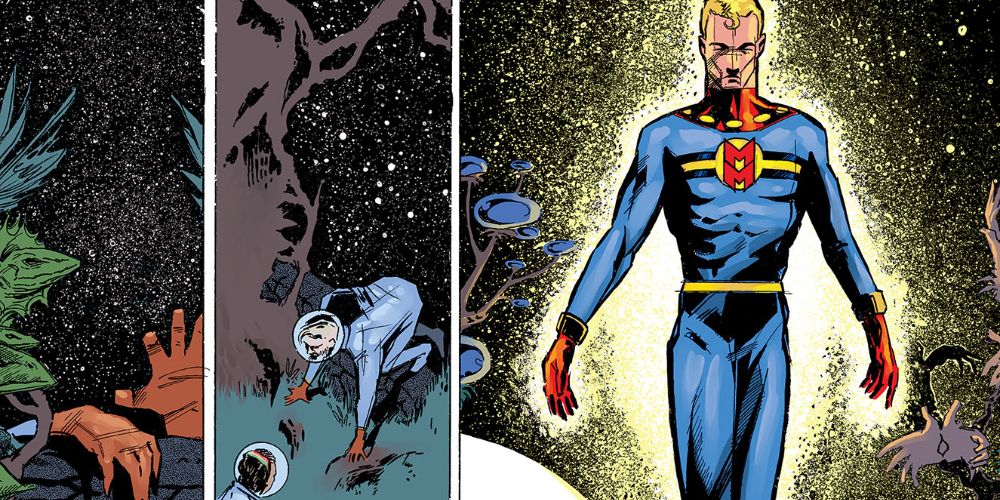
Miracleman is to England what Captain America is the United States. This homegrown hero was created in 1954, first as Marvelman and then as Miracleman from 1985 onward in order to avoid any legal issues with Marvel Comics.
Gaiman took over writing Miracleman comics in 1990 from Alan Moore, beginning with issue #17. Three volumes were planned — The Golden Age, The Silver Age, and The Dark Age — but USA comics imprint Eclipse went bankrupt before Gaiman could finish his run.
Coraline (2008)

One of Gaiman’s best-known works, the 2002 novella Coraline inspired the 2009 stop-motion animated feature directed by Henry Selick. In Gaiman’s story, the young titular girl moves into a new home with her parents, where she discovers a door that leads to a flat that looks exactly like hers.
The more time lonely Coraline spends in the mirror world on the other side of the door, the more she comes to realize evil forces are at play. In 2008, Gaiman worked with comics artist and writer P. Craig Russell to transform Coraline into a graphic novel.
Neil Gaiman’s Midnight Days (1990 – 1998)
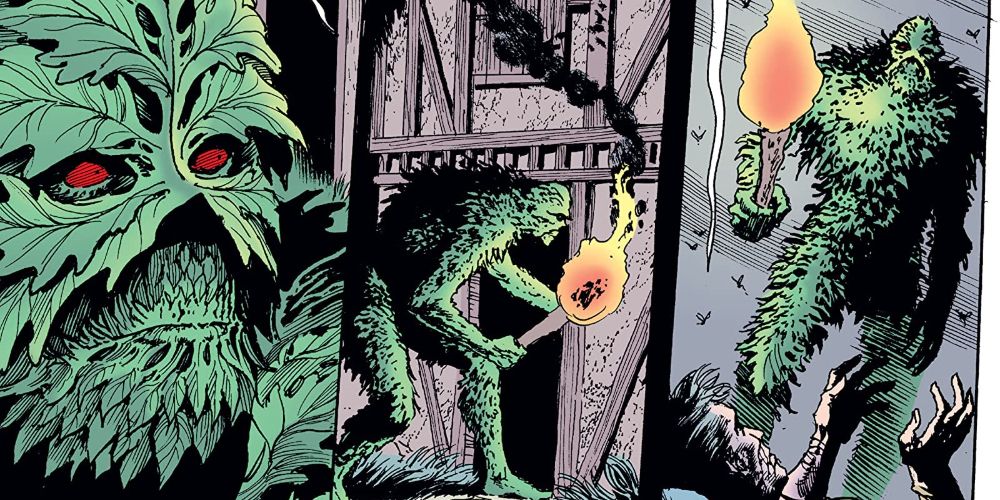
After the success of Gaiman’s Sandman series, DC put together a compilation of Gaiman’s earliest works. Midnight Days includes Hellblazer #27, a John Constantine tale illustrated by Dave McKean, as well as a Swamp Thing story published as Swamp Thing Annual #5.
Another piece from Swamp Thing Annual #5, “Shaggy God Stories,” was illustrated by Mike Mignola. The collection also includes Sandman Midnight Theatre, which details the one and only meeting between the Golden Age Sandman and the Sandman of the Endless.
Marvel 1602 (2003)
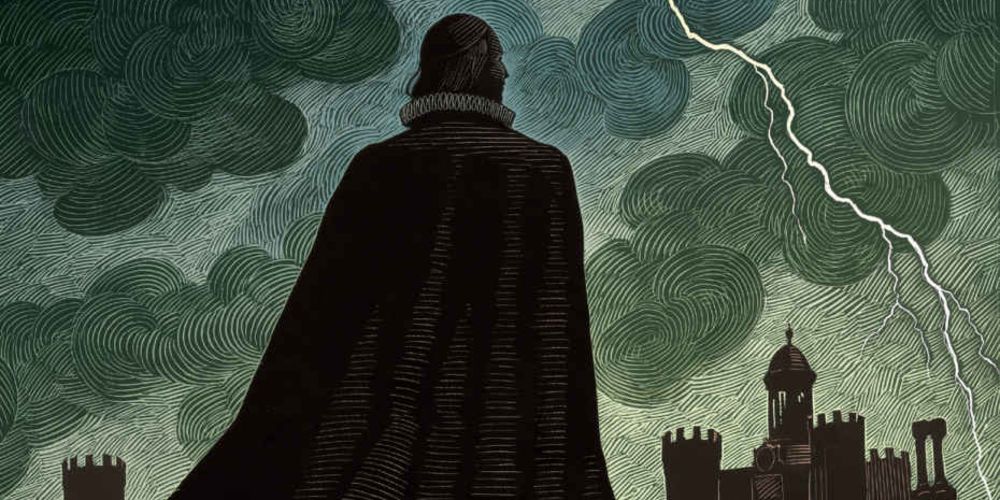
Gaiman switched from DC to Marvel with this limited series where Marvel superheroes exist in Elizabethan England. Taking Marvel’s history back 400 years gives Gaiman free reign to reinvent these familiar faces, from Charles Xavier to Dr. Strange to Black Widow.
Marvel 1602 begins with Dr. Stephen Strange, Queen Elizabeth I’s court physician, suspecting some supernatural forces are at work when bizarre weather patterns send all of Europe into a panic. A fun-filled adventure ensues, one made cinematic by Andy Kubert’s beautiful illustrations and Richard Isanove’s digital painting skills.
Death: The High Cost Of Living (1993)
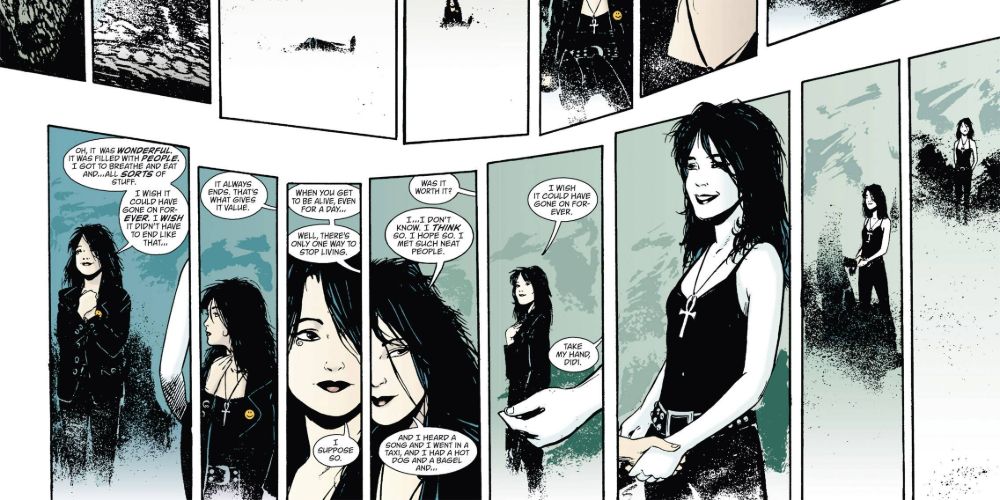
Death is the elder sister of Dream, the protagonist of Gaiman’s Sandman. This spin-off limited series published in three issues by DC imprint Vertigo follows Death as she assumes a human form — an endeavor she undertakes once a century in order to remain abreast of humanity’s evolution.
Gaiman characterizes Death as a likable, dynamic entity who transforms herself into a young teenage goth named Didi. As Didi, Death takes it upon herself to aid anyone whose path she crosses, learning a lot about people in the process.
American Gods (2017 – 2020)
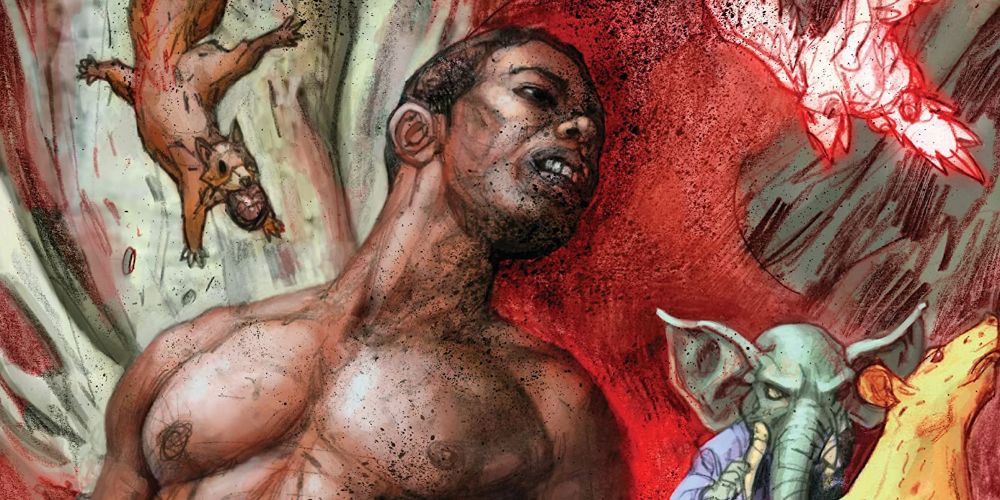
Gaiman’s award-winning fantasy novel American Gods received the comic book treatment with the help of P. Craig Russell and Scott Hampton. Published by Dark Horse in three volumes, the comics coincide with the Starz series that just concluded in 2021.
American Gods focuses on an ex-convict named Shadow Moon who finds himself in the middle of an epic battle between Old Gods and New Gods. Through this basic premise, Gaiman explores the rituals, beliefs, and power struggles that define the American experience.
The Sandman (1989 – 1996)
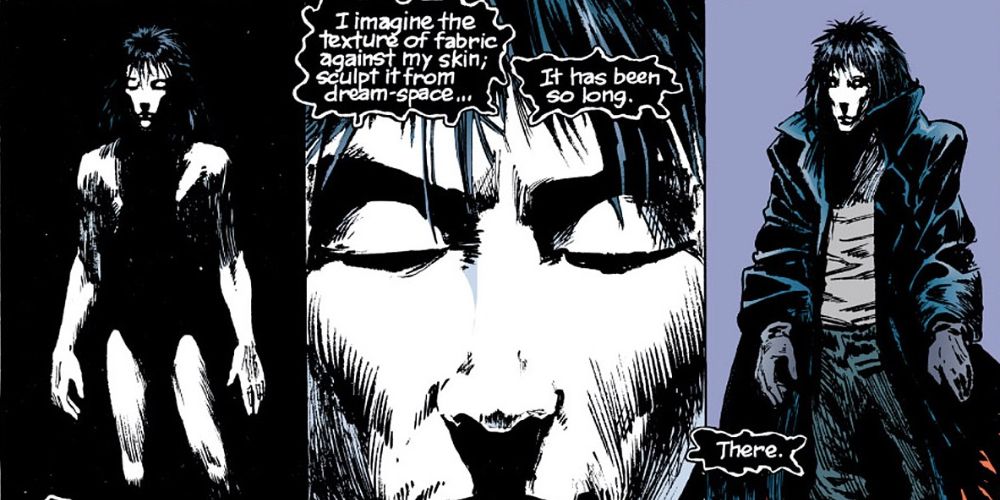
There’s no denying Gaiman’s seminal work remains The Sandman, which began when Gaiman propositioned DC about reviving The Sandman series published in the mid-1970s. The comic’s titular character, the anthropomorphic personification of dreams, is known by many names: Dream, Morpheus, Oneiros, The Shaper.
The series begins when Dream is freed after being held captive for 70 years by an occult group, and readers are slowly exposed to the supernatural world of the Endless, Dream’s siblings who work with him to control the natural forces of the universe. Few long-running comics achieve the linguistic mastery, visual beauty, and mythmaking capabilities of The Sandman.




